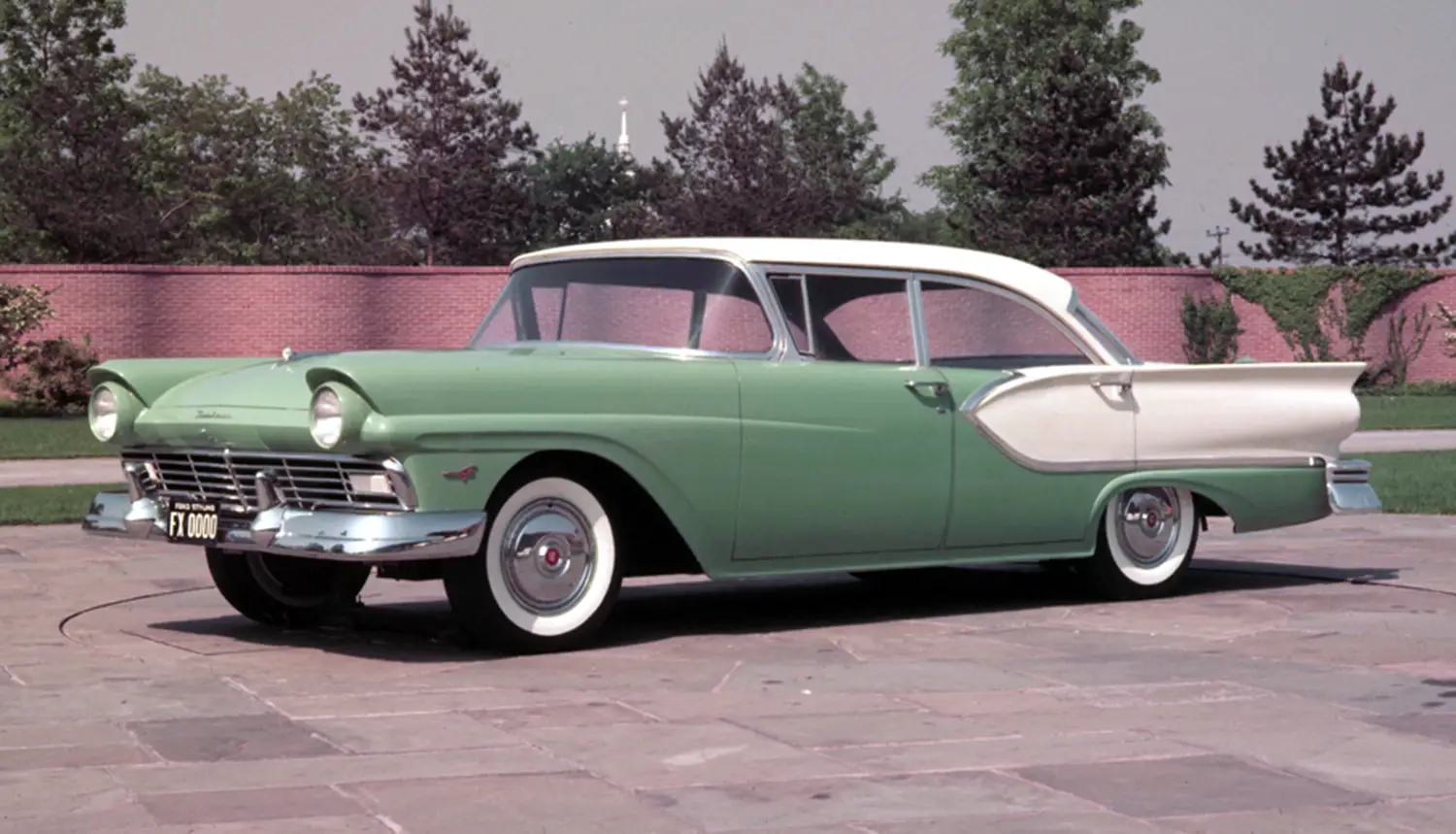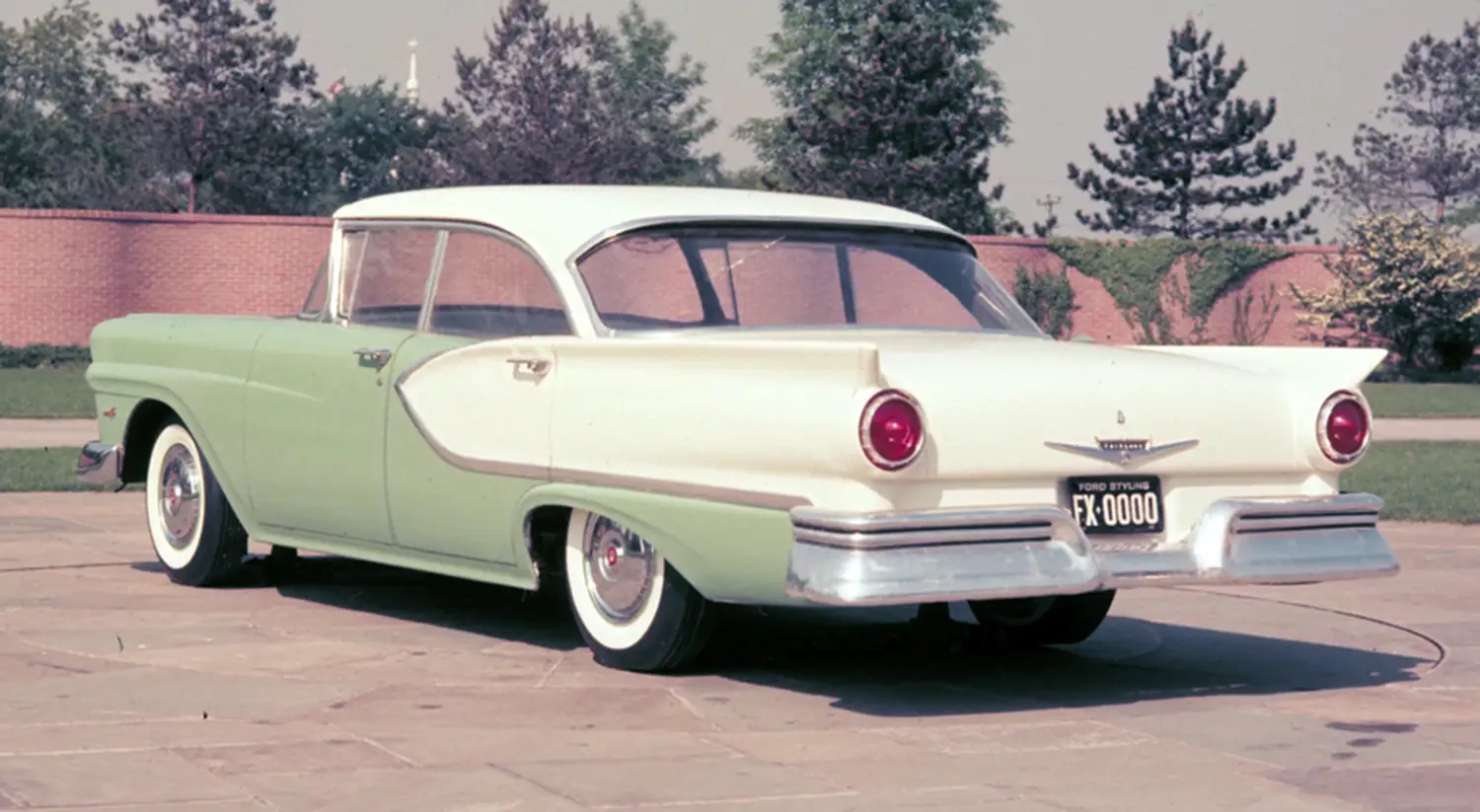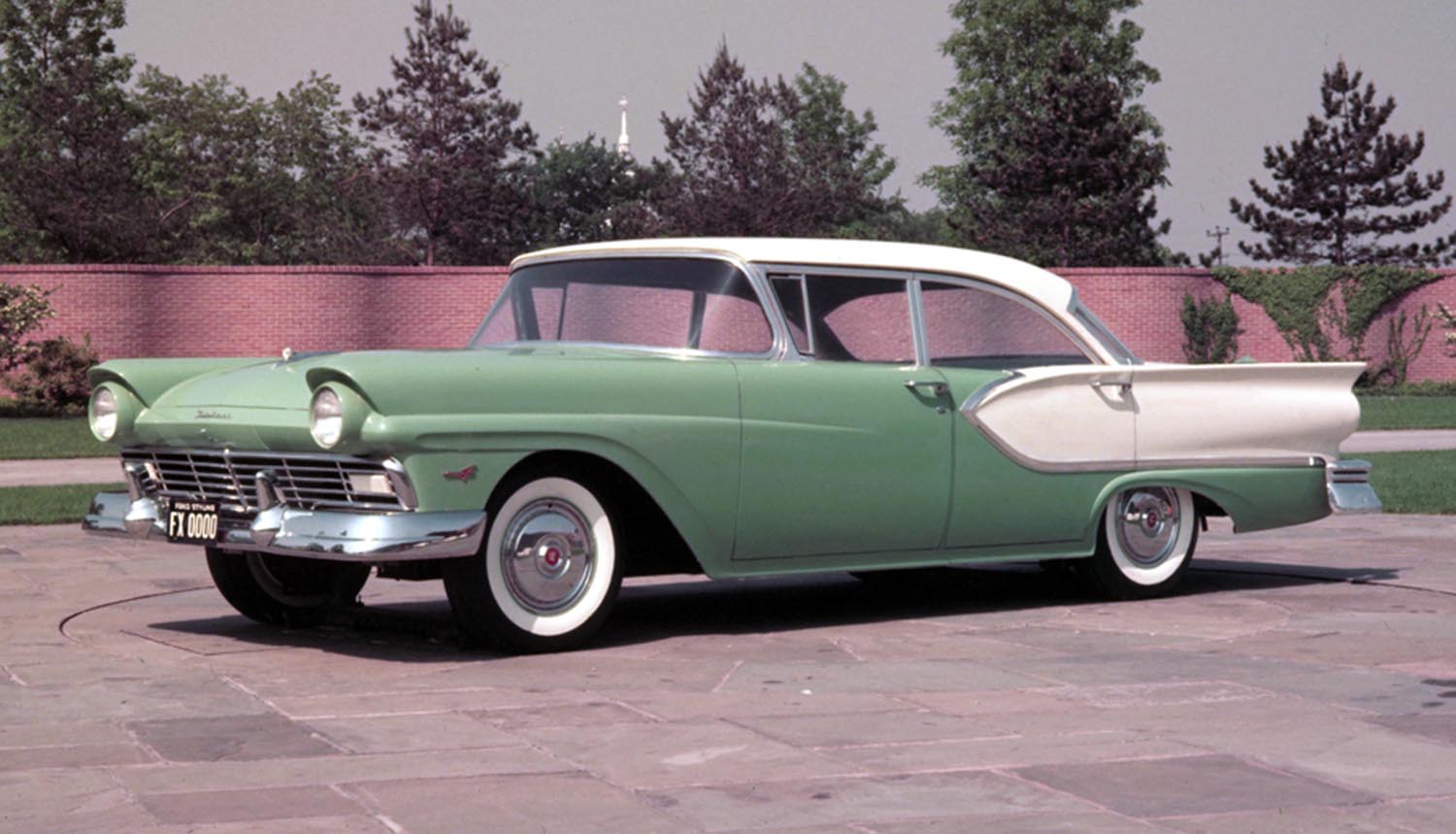
Step into the American post-war era, and you will see a nation with an appetite for newness. This is the stage where the 1957 Ford Fairlane sedan made its indelible mark. This was not merely a refreshed model; it was a total re-engineering and restyling effort, the foundation for one of Ford’s greatest sales victories. The four-door model, in particular, was the high-volume car that brought jet-age style to the suburban driveway. You can trace much of Ford’s later full-size heritage back to this single model year.
An All-New Platform for a Lower Stance
Ford built the 1957 Fairlane on a completely new perimeter frame chassis, the first new platform since 1949. This engineering shift enabled the body to drop a full four inches, creating the long, low-slung silhouette that defined the decade. Designers also lowered the floor pan, which was crucial for maintaining comfortable interior space despite the reduced overall height. Therefore, the 1957 Ford Fairlane sedan achieved its dramatic look without sacrificing family practicality. They also moved the rear springs outboard of the frame rails to improve handling, giving the car a more stable, road-hugging feel.
Sweeping Lines and Mid-Century Style
The four-door Fairlane sedan used a longer 118-inch wheelbase, visually stretching the body for a more premium look. Its exterior was a masterpiece of mid-century design, characterized by a bold, sweeping chrome side-spear. This chrome trim started near the headlights, then followed a clean, horizontal line before kicking up dramatically at the rear fender. This sharp visual movement gave the 1957 Ford Fairlane sedan the illusion of constant motion. Furthermore, the taillights were nestled in small, graceful tailfins, perfectly capturing the optimistic, space-age aesthetic of the time.
Practicality Meets Comfort Inside
As a four-door model, the Fairlane sedan excelled at its job: moving people in comfort. The spacious cabin provided ample room for six passengers on its wide, foam-padded bench seats. Ford offered a generous array of color-keyed upholstery and vinyl combinations, making the interior feel sophisticated and welcoming. The dashboard featured a wide, easily readable speedometer flanked by fuel and temperature gauges. Practicality extended to features like “Automatic Doorman” rear door hinges, which made entry and exit surprisingly easy.
The Heart of the Fairlane Sedan: Performance
The four-door Fairlane came equipped with a range of engines to suit various buyer needs. The base engine was the reliable 223-cubic-inch Mileage Maker inline-six, rated at 144 horsepower. However, most buyers stepped up to the excellent Y-block V8 engines.
Engine and Power Specifications
A popular choice was the 292-cubic-inch Thunderbird V8, which delivered a healthy 212 horsepower. This engine provided smooth acceleration and effortless highway cruising for the full-size sedan. Enthusiasts could option the powerful 312-cubic-inch Thunderbird Special V8. That engine produced 245 horsepower with a four-barrel carburetor, offering a real taste of the horsepower wars. A three-speed manual transmission was standard, while the two-speed Ford-O-Matic was a popular automatic option. The availability of these muscular V8s ensured the family sedan did not lack punch.
Cementing Its Place in Automotive History
The 1957 Ford Fairlane sedan was not just a successful car; it was a cultural phenomenon that delivered a sales win over Chevrolet. It perfectly married a fresh, bold design with a practical, well-engineered chassis. This sedan proved that an everyday car could look expensive and feel powerful, a philosophy Ford would carry forward for decades. The clean lines and enduring V8 grunt of this iconic four-door continue to draw admirers today.
Disclaimer: Content on this site is for informational purposes only. Vehicle specs, pricing, and availability may change. Always verify details with official sources before making decisions. Opinions are those of the authors.
Source: Ford Heritage Vault

